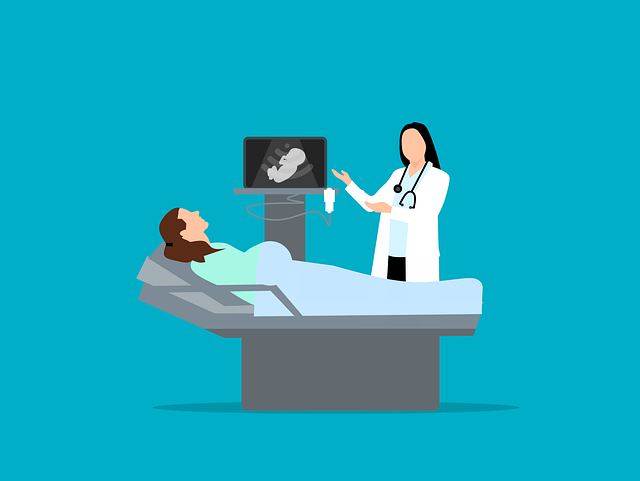Contrast-Enhanced Ultrasound Sonography (CEUS) is a groundbreaking non-invasive imaging technology that uses high-frequency sound waves and contrast agents to significantly enhance the detail and resolution of internal organs, blood flow, and structures. In pediatric settings, CEUS provides safe visualization for diagnosing congenital abnormalities, tumors, and vascular issues, without exposing patients to ionizing radiation, making it a preferred alternative to X-rays or CT scans. This technology is also effective in real-time monitoring during procedures like angioplasty. With its high resolution, depth perception, cost-effectiveness, and accessibility, CEUS is ideal for routine screening, follow-up exams, and conditions requiring minimal radiation exposure. Future advancements in hardware and software, including AI integration, promise to expand CEUS's role into oncology and revolutionize image interpretation, ensuring its central position in personalized medicine.
“Contrast-Enhanced Ultrasound Sonography (CEUS) is transforming pediatric and non-invasive imaging, offering a safe, real-time alternative to traditional methods. This article delves into the innovative world of CEUS, exploring its benefits in pediatric diagnostics and its superior advantages over invasive techniques. We provide an in-depth overview, from understanding the technology’s fundamentals to discussing its evolving role in medical practice. Discover how CEUS enhances imaging accuracy while minimizing risks, revolutionizing patient care.”
Understanding CEUS: An Overview of Contrast-Enhanced Ultrasound Sonography
Contrast-Enhanced Ultrasound Sonography (CEUS) is a revolutionary advancement in ultrasound imaging with contrast, allowing for improved visualization of internal structures within the body. This non-invasive technique involves the administration of a small amount of contrast agent into the patient’s bloodstream, which is then tracked by high-frequency sound waves. The contrast agent appears as a distinct echo on the ultrasound images, enhancing the resolution and providing more detailed information compared to traditional ultrasound.
CEUS plays a pivotal role in pediatric and non-invasive imaging due to its safety and ability to offer dynamic real-time visuals of various organs and vascular structures. It is particularly useful for assessing blood flow, identifying tumors, evaluating liver and kidney function, and detecting abnormalities in the gastrointestinal tract. By offering high-resolution images without ionizing radiation, CEUS provides a valuable alternative to other imaging modalities, ensuring better diagnostic accuracy and patient safety.
Applications in Pediatric Imaging: Benefits and Use Cases
In pediatric imaging, ultrasound imaging with contrast (CEUS) offers a non-invasive approach with significant advantages. It enables detailed visualization of internal organs and blood flow in children, aiding in the diagnosis of various conditions such as congenital abnormalities, tumor growths, and vascular issues. The use of CEUS can help avoid ionizing radiation exposure often associated with other diagnostic methods, making it safer for young patients.
One key benefit is its ability to differentiate between normal and abnormal tissue structures, enhancing the accuracy of diagnoses. For instance, CEUS is instrumental in identifying small lesions or tumors that might be missed by conventional ultrasound. It also facilitates real-time monitoring during procedures like angioplasty or stent placement, allowing for prompt adjustments and improving procedural outcomes. Moreover, CEUS can guide percutaneous interventions, ensuring safer and more effective treatment for pediatric patients.
Advantages of Non-Invasive Contrast Ultrasound over Traditional Methods
Non-invasive contrast ultrasound (CEUS) offers several advantages over traditional imaging methods, making it a valuable tool in pediatric and other specialized settings. Unlike ionizing radiation used in X-rays and CT scans, CEUS employs a safe and reliable contrast agent that is injected into the patient’s bloodstream. This approach allows for real-time visualization of blood flow and structural details within organs without subjecting patients to potential long-term effects of radiation exposure.
CEUS provides high-resolution images with excellent depth perception, enabling accurate diagnosis and monitoring of various conditions. It is particularly beneficial in evaluating vascular structures, detecting small lesions, and assessing organ perfusion. Moreover, CEUS is cost-effective, non-ionizing, and readily available, making it a preferable choice for routine screening, follow-up exams, and cases where ionizing radiation exposure needs to be minimized.
Future Prospects: The Evolving Role of CEUS in Medical Imaging
The future prospects of ultrasound imaging with contrast (CEUS) are promising, as ongoing advancements continue to shape its evolving role in medical imaging. With improvements in contrast agent technology and ultrasound hardware, CEUS is expected to become even more versatile and accurate. Researchers are exploring new applications beyond traditional vascular imaging, such as in oncology, where CEUS can assist in the detection and characterization of tumors. The non-invasive nature of CEUS makes it an attractive alternative to more invasive procedures, ensuring safer diagnostic options for patients.
Furthermore, integration of artificial intelligence (AI) and machine learning algorithms has the potential to revolutionize CEUS interpretation. AI-driven analysis can enhance image quality, detect subtle abnormalities, and provide quantitative assessments, leading to more efficient and accurate diagnoses. As technology advances, CEUS is poised to play a pivotal role in personalized medicine, offering tailored imaging solutions based on individual patient characteristics.
Contrast-enhanced ultrasound sonography (CEUS) has emerged as a powerful, non-invasive tool for pediatric and adult imaging, offering unique advantages over traditional methods. By enhancing the visualization of internal structures, CEUS provides accurate diagnoses without the risks associated with ionizing radiation. As research progresses, its role in medical imaging is set to expand further, potentially revolutionizing diagnostic practices. The future of ultrasound imaging with contrast looks promising, promising more efficient and accessible healthcare solutions.
